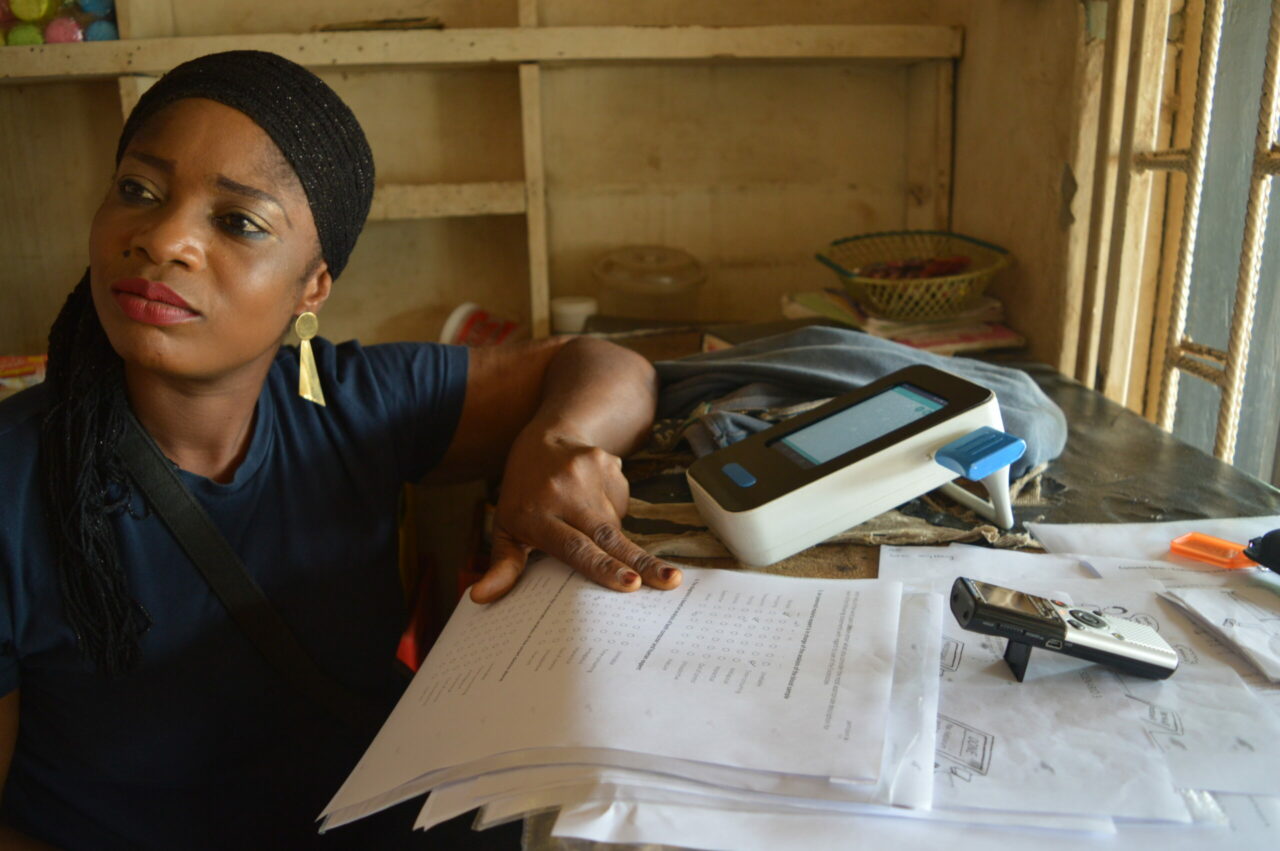A roadmap for development of a smart malaria diagnostic device: use and acceptance of the Excelscope by healthcare professionals in Nigeria
ongoing
Master thesis by Julia Stoevelaar

Malaria is a life-threatening parasitic disease and the leading cause for high morbidity rates in developing countries. In Nigeria, the chosen context of this study, over 90% of the population is at risk of malaria infection, leading to 60% of the outpatient visits in Nigerian healthcare facilities. Accurate diagnostics are not available for the mass and drugs can be bought without prescription, leading to misdiagnosis, overtreatment and drug resistance.
The Excelscope is a smart malaria diagnostic device that leverages the functionalities of a smartphone to capture magnified images of a blood smear and provide a remote or automated diagnosis. The concept was developed by students from the faculty of Industrial Design Engineering and is currently under development of a research consortium. The Excelscope aims for increasing accessibility to accurate malaria diagnostics. Three scenarios for the diagnostic analysis of a blood sample (remote, semi-automated and automated) were the starting point of this research.
The technology analysis evaluated the three defined scenarios for remote or point-of-care diagnostics. Based on an initial analysis, the assumption was made that the semi-automatic scenario was most feasible in the context and best accepted by healthcare professionals (doctors, nurses, lab scientists). Furthermore, the technology analysis briefly discussed definitions related to eHealth, resulting in several ideas for applications for the Excelscope. Finally, a study into similar technologies for malaria diagnostics was done. An integrated system for imaging and automated parasite detection has not been launched on the market yet, although several organizations and companies are working on similar technologies.

The context analysis consists of four chapters: Nigeria, her healthcare system, malaria and -diagnostics. Next to literature research and expert interviews, Insights were gained during a one-month field study in Ibadan, Nigeria. During the field study, healthcare facilities were visited and caregivers participated in semi-structured interviews. The context analysis resulted in a country profile (including general aspects about economy, living standard and health), an overview of the healthcare system and insights on each tier of the healthcare system. Coverage of malaria diagnostics can significantly increase when a device is implemented in primary healthcare centres, pharmacies, medicine stores or medical outreaches. However, the Excelscope has to meet the minimal infrastructure at these places: little or no access to reliable water, lack of internet connection, low-level medical staff and ‘robust’ environments.
Current ways of diagnosing malaria were studied as well and evaluated according to WHO’s ASSURED checklist. Microscopy and rapid diagnostic tests are the recommended methods for confirmation of a suspected case of malaria. However, both methods lack on different aspects, such as affordability, availability or accuracy. In development of the Excelscope, the checklist can be used as guidelines for basic requirements. However, aspects related to context (infrastructure and accessibility) and user (behaviour, attitude and trust) are essential in order to develop an effectively used device.
Throughout this project, emphasis has been placed on the user. The goal of this study was to find barriers and enablers for use and acceptance of the Excelscope by healthcare professionals in Nigeria. During the interviews with stakeholders in Nigeria, the different scenarios were discussed, as well as local perspectives on malaria management in general. Through the interviews, six potential target groups were defined: patent medicine vendors, pharmacists, medical doctors, nurses, laboratory scientists and medical volunteers (community health workers). For each of the target groups, suggestions have been given for smartness of the device, values and mHealth applications.
The study is concluded with a ‘roadmap’ wherein all findings are connected in a framework of technology, context and user. The framework can be used for defining a target group or anticipating on necessary developments in order to increase.
You can read the full thesis report here.